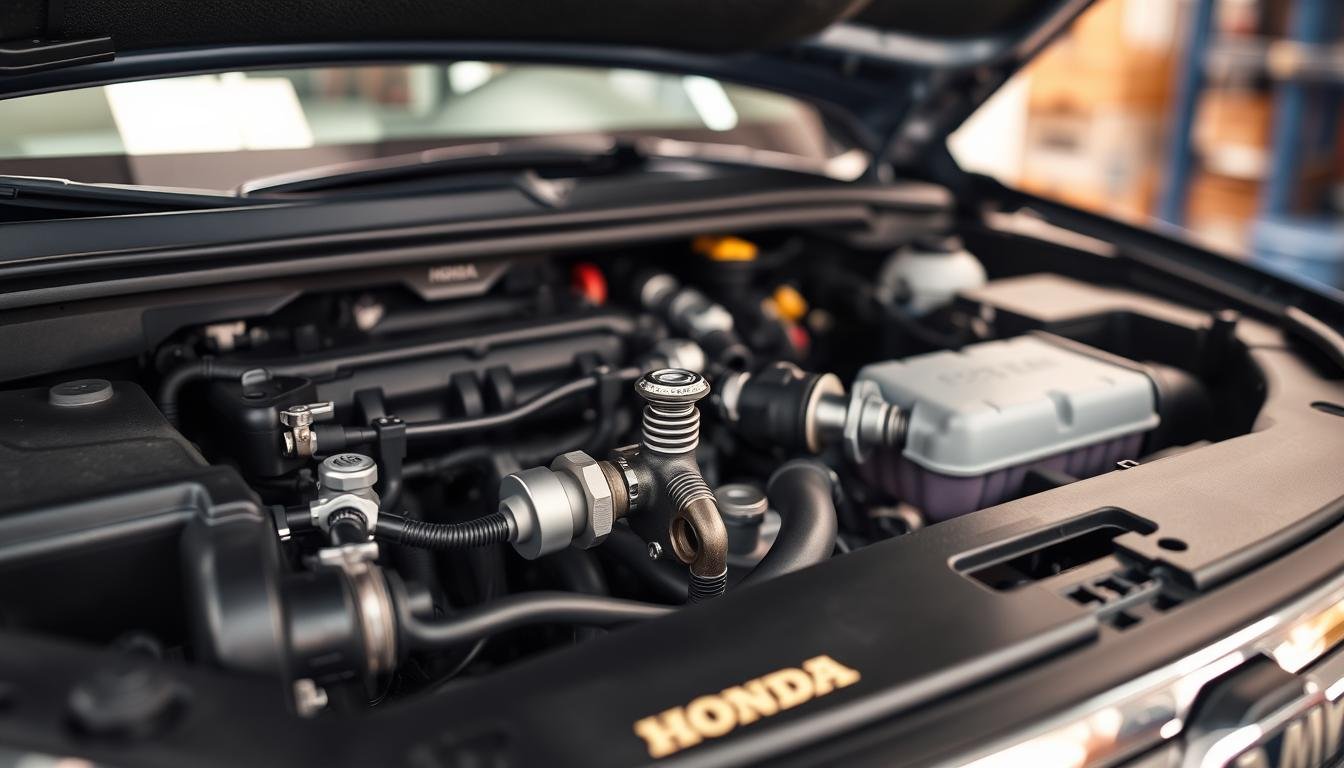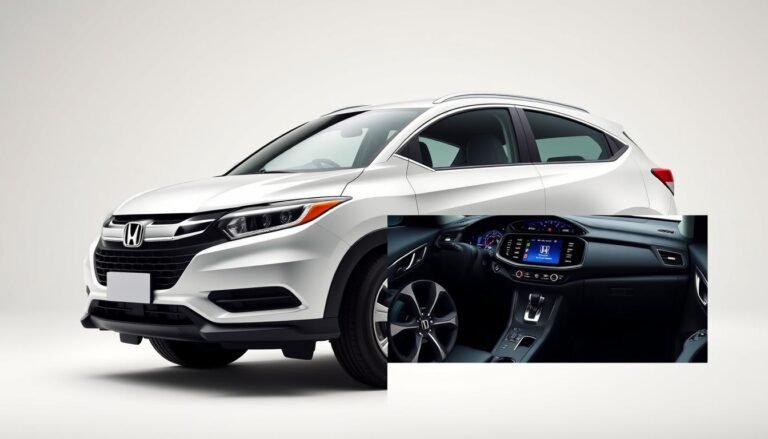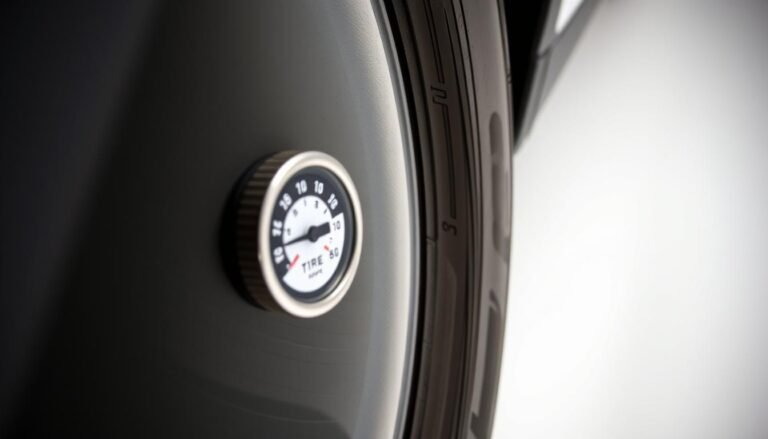Honda Pilot Emissions System Problem Fixes For 7 Idea
Are you having trouble with your Honda Pilot’s emissions system? It’s important to fix emissions problems to keep your car running well and to meet environmental standards.
Honda Pilots from 2003 to 2019 can have issues like lower gas mileage, warning lights, or hesitant performance because of emission system errors.
Knowing about these troubles can help you find and fix them. We’ll cover common emission problems, their causes, and how to fix them in this piece.
Start with noticing symptoms like warning lights or a drop in how your car feels when driving. Then, use an OBD-II scanner for a check-up.
Taking good care of your car ahead of time can help prevent these issues, keeping your car working better for longer.
Let us guide you through fixing these problems. With our help, you can handle your Honda Pilot’s emissions issues confidently.
What is The Honda Pilot Emissions System?
The Honda Pilot’s emissions system is key to lowering its environmental impact and keeping it running smoothly.
It includes parts like catalytic converters and oxygen sensors. These work together to cut down on bad emissions.
Recent engine tech, like Variable Cylinder Control (VCM) and direct fuel injection, has made the system more complex.
This can lead to emissions problems for Honda Pilot owners. Knowing how the emissions system and its parts work is important. It helps you spot problems early.
For instance, if an oxygen sensor or catalytic converter isn’t working right, it can affect your car’s performance and how it meets environment standards.
Taking care of emissions issues early keeps your car efficient and eco-friendly. It also gives you peace of mind while driving.
Common Honda Pilot Emissions System Problems
The Honda Pilot’s emissions system helps cut down on toxic gases. This system faces issues, especially with the catalytic converter and oxygen sensors failing.
Problems occur in models from 2003 to 2019. When these parts don’t work right, your car may run poorly and pollute more. This can also cause warning lights to come on.
It’s key to recognize these problems early. Here are some common issues you might see:
- Catalytic converter failures leading to decreased exhaust efficiency.
- Faulty oxygen sensors resulting in incorrect fuel mixture adjustments.
- Complications from the Vehicle Cylinder Management (VCM) system.
- Direct fuel injection problems affecting engine performance and emissions.
Fixing a Honda Pilot emissions issue is critical for your car’s performance and lifespan.
Knowing these common issues can help you act early. Doing so can help avoid bigger, costlier repairs later.
What Causes A Honda Pilot Emissions System Problem?
Several reasons can lead to an emissions problem in a Honda Pilot. Knowing why helps fix the issue quickly and boost the car’s performance. Common causes are bad parts and system malfunctions.
Defective Oxygen Sensors
Oxygen sensors keep an eye on exhaust gases to maintain the right fuel-to-air mix. If they fail, they send wrong data. This can lower gas mileage and increase the car’s emissions.
Faulty Catalytic Converters
The catalytic converter cleans harmful exhaust gases. But over time, it can wear out and not work well. This drop in performance can lead to emissions issues.
Cylinder Deactivation System Issues
The 2006 and newer models of the Honda Pilot have a cylinder deactivation feature.
Faults in this system can cause unusual emissions. These faults make figuring out the problem harder.
Direct Fuel Injection Problems
Newer Honda Pilots use direct fuel injection for better efficiency. Yet, this technology can also cause problems.
Issues here may turn on the check engine light and mess up the combustion process. This situation can result in more emissions.
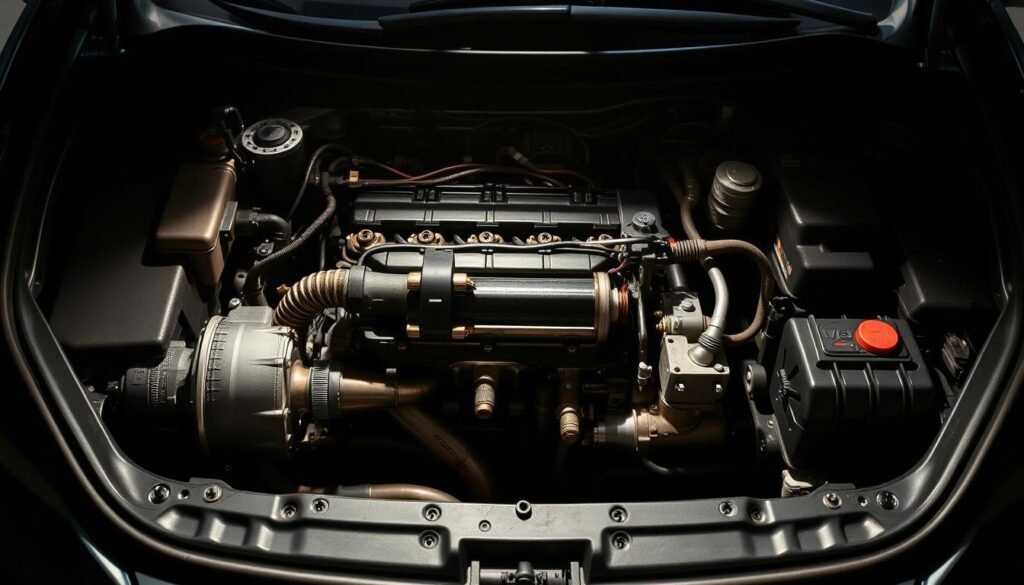
Honda Pilot Emissions System Problem Symptoms
Knowing the signs of emissions problems in your Honda Pilot could save you trouble.
Catching these issues early might save you from big repair costs. Look out for these key signs of emissions system failure.
Warning Lights and Alerts
Warning lights on your dashboard are often the first hint of trouble. When the check engine light or emissions warnings come on, it’s time to check under the hood.
Ignoring these signals can lead to bigger problems down the road.
Drop in Fuel Efficiency
Are you going to the gas station more than usual? A sudden drop in fuel efficiency could mean your emissions system isn’t working right.
If your driving habits haven’t changed but you’re filling up more, it’s wise to check for emissions problems.
Performance Issues
Problems like rough idling, engine misfires, or losing power can point to emissions trouble. These signs mean the emissions system might not be working as it should.
If your engine isn’t running smoothly, it might be time to check for emissions system issues.

How To Diagnose Honda Pilot Emissions System Problems?
When you face emissions system issues with your Honda Pilot, start methodically. Use an On-Board Diagnostics II (OBD-II) scanner to find error codes.
These codes are key to identifying problems. For example, a P0420 code points to a weak catalytic converter, guiding your next steps. Inspect important parts closely next.
Look at the oxygen sensors and catalytic converters for damage or signs of wear. Issues like rust, cracks, or loose parts need fixing to improve your troubleshooting.
| Error Code | Description | Potential Causes |
|---|---|---|
| P0420 | Catalytic converter efficiency below threshold | Faulty catalytic converter, damaged oxygen sensors |
| P0131 | Oxygen sensor circuit low voltage | Wiring issues, defective oxygen sensor |
| P0300 | Random/multiple cylinder misfire detected | Fuel system issues, ignition system failures |
| P0171 | System too lean (Bank 1) | Vacuum leaks, bad fuel injectors |
By using these methods, you make it easier to figure out emissions problems. Knowing the codes and doing careful checks helps fix your Honda Pilot faster.
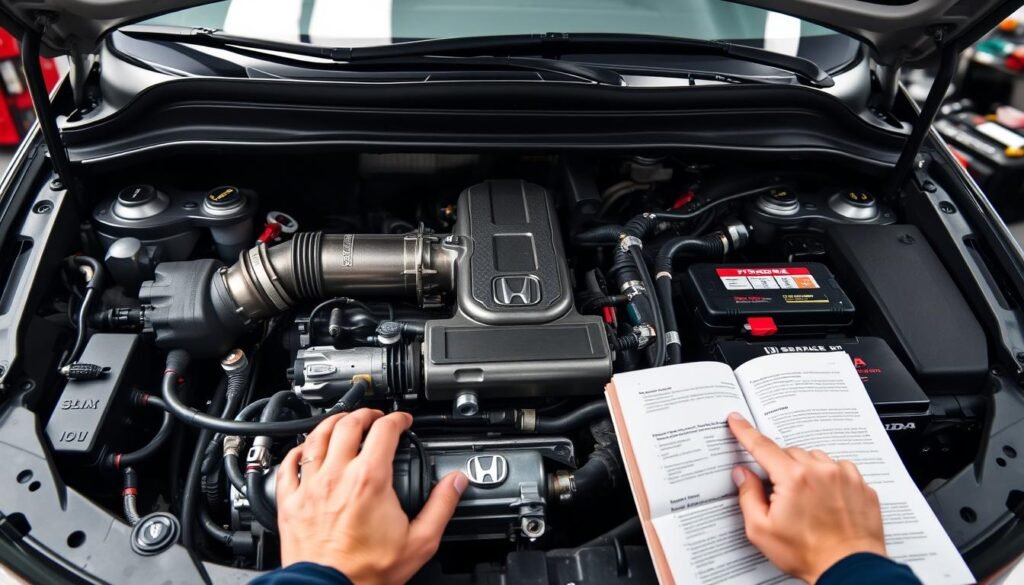
Honda Pilot Emissions System Problem Troubleshooting
Keeping your Honda Pilot’s emissions system in top shape is vital. It ensures your car runs smoothly and is eco-friendly.
You can identify and solve problems by using specific methods. Two main ways to do this are using OBD-II scanners and checking parts yourself.
Using OBD-II Scanners
OBD-II scanners are great for finding faults in the emissions system. Always write down any error codes you see before resetting them.
This step helps you know exactly where to look to fix issues. By regularly using these scanners, you can spot problems before they get worse.
Visual Inspections of Components
Looking at parts yourself is also key to finding emissions problems. Check the wires, sensors, and other parts for damage or loose connections.
Spotting these problems early can keep your emissions system running right. Doing this helps you fix things quicker and more efficiently.
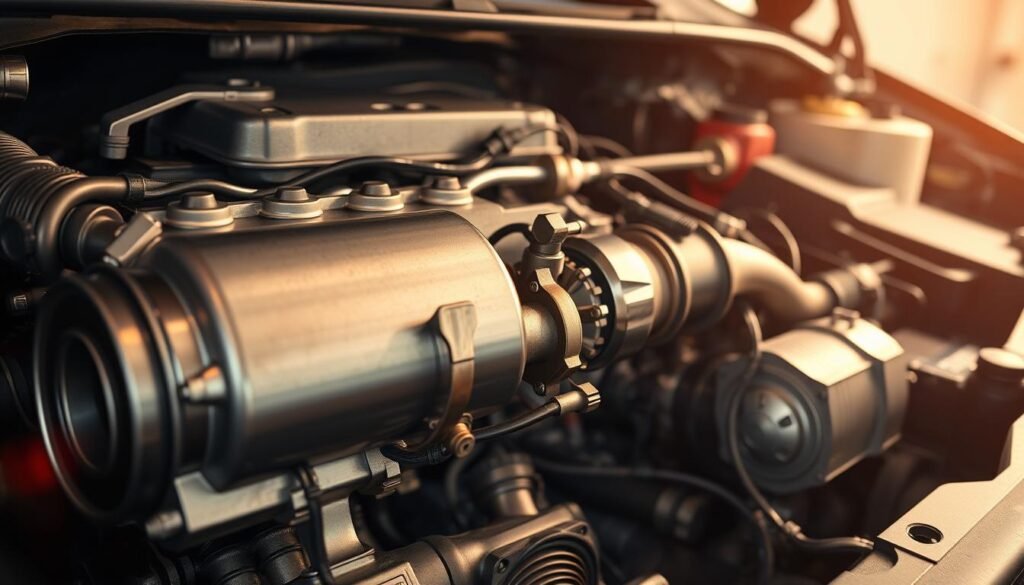
Honda Pilot Emissions System Repairs
Fixing a Honda Pilot emissions problem usually involves changing sensors and actuators. These parts are key in the emissions system.
They help improve performance and keep the car eco-friendly. Though mostly affordable, it’s important to follow the maker’s guidelines for the best repair results.
Sensor and Actuator Replacements
Typical repairs include changing out bad sensors, like the oxygen sensor, and actuators that aren’t working right. Sensors keep an eye on emission levels and inform the engine control unit.
Actuators manage parts like the throttle and exhaust gas recirculation valve. Changing these can fix many problems with the emissions system.
Catalytic Converter Replacements
Sometimes, fixing emissions issues means replacing the catalytic converter. This part is key to cutting down harmful emissions.
If it’s not working, your car won’t perform well and might not meet environmental standards.
Though costly, replacing it is essential for ongoing emissions problems with your Honda Pilot.
Honda Pilot Emissions System Problem Fix Recommendations
When your Honda Pilot’s emissions system acts up, a step-by-step approach to fixes is key. Start by checking how severe the problem is with diagnostic tools.
These tools help figure out which parts might be causing trouble in the emissions system.
Next, decide which repairs are most urgent based on how they affect your vehicle. If diagnostics show a serious issue that could lead to more problems or expensive repairs, fix it quickly.
For complicated issues, like those with the Vehicle Control Module (VCM), direct fuel injectors, or other key emissions parts, get a professional mechanic’s help.
They have the skills to fix complex problems right, ensuring your vehicle runs well for a long time.
Stick to these steps for fixing your Honda Pilot’s emissions system issue. Doing so will help get your car back to top shape and avoid further issues.
Preventive Maintenance For Honda Pilot Emissions System
Keeping your Honda Pilot’s emissions system in check is key to its best performance and lower emissions.
Taking steps early can save you from high repair costs and future emissions troubles. Knowing how important maintenance is will help your emissions system parts last longer.
Regular Inspections
It’s crucial to check the emissions system often. Doing routine inspections helps catch problems before they grow.
Focus on these important areas:
- Inspecting oxygen sensors for wear or malfunction.
- Checking for leaks in hoses and connections.
- Evaluating the condition of the catalytic converter.
Scheduled Maintenance
Following the maintenance schedule for your Honda Pilot is key to keeping the emissions system working well.
To avoid emissions issues, try these tips:
- Change engine oil and fluids as per the manufacturer’s recommendations.
- Replace air filters regularly to ensure optimal combustion.
- Have the vehicle’s performance systems checked during routine upkeep to identify any discrepancies.
Cost of Honda Pilot Emissions System Repairs
The cost to fix the Honda Pilot emissions system can change a lot. It depends on what’s wrong and how bad it is. Knowing about these costs helps you get ready for repairs you might need.
The money you might spend on fixing the Honda Pilot emissions system includes:
- Oxygen sensors, typically costing around $125 each.
- Labor charges that differ based on the complexity of the repair and the mechanic’s rates.
- Catalytic converters, which can be quite costly with replacements reaching upwards of $3,000.
Here’s a quick look at typical costs:
| Repair Type | Estimated Cost |
|---|---|
| Oxygen Sensor Replacement | $125 |
| Catalytic Converter Replacement | $3,000+ |
| Labor Costs (average) | $75 – $150 per hour |
Keep these costs in mind when planning repairs for your Honda Pilot’s emissions system. It’s smart to consider this info to tackle any emissions problems you run into.
Conclusion
Fixing the Honda Pilot emissions system is key for good car performance and meeting environmental rules.
Knowing about issues like old oxygen sensors or broken catalytic converters is vital. This knowledge helps you act early to avoid bigger problems later.
Watch for signs of emissions system trouble in your Honda Pilot, like warning lights or less gas mileage. Being aware and taking action helps you dodge expensive fixes.
Regular checks and maintenance make sure your car runs well for a long time.
In the end, dealing with emissions system troubles boosts your driving experience and helps the planet.
By keeping your Honda Pilot’s emissions in line, you get a car that’s dependable and runs efficiently.
FAQs
Q: What are common signs of emissions system problems in the Honda Pilot?
A: Common symptoms include dashboard warning lights, decreased fuel efficiency, and issues like rough idling or misfires.
Q: How can I diagnose emissions system issues in my Honda Pilot?
A: Use an OBD-II scanner to get error codes. These codes can point out specific failures. Also, check components like oxygen sensors and catalytic converters visually.
Q: What are the most common causes of emissions system problems in the Honda Pilot?
A: Defective oxygen sensors, faulty catalytic converters, and cylinder deactivation system issues are common. Problems with direct fuel injection also occur.
Q: How often should I perform maintenance on my Honda Pilot’s emissions system?
A: Follow Honda’s guidelines for regular inspections and maintenance to avoid emissions problems.
Q: What kind of repairs might I need to address emissions system problems?
A: Repairs might include replacing sensors (like oxygen sensors) and actuators. In severe cases, catalytic converters may need replacement.
Q: How do I know if my catalytic converter needs replacement?
A: A failing catalytic converter may cause poor engine performance, a sulfur smell, and check engine light codes like P0420.
Q: What should I do if my Honda Pilot triggers an emissions alert?
A: If your vehicle triggers an emissions alert, use an OBD-II scanner and visually inspect the system. Then, consult a mechanic for further help.

